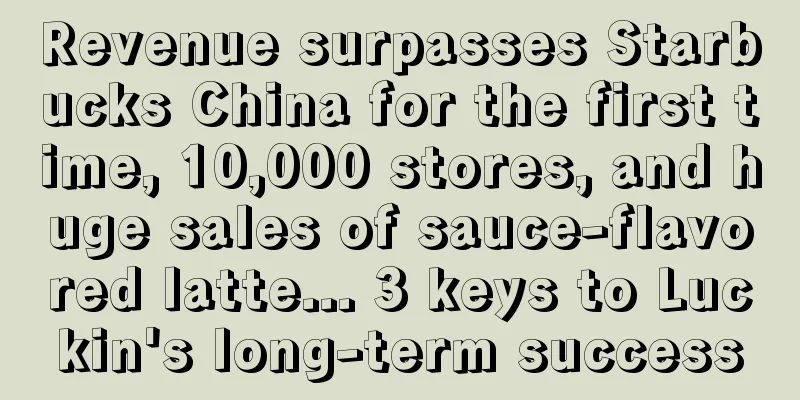10,000 words sorted | 35 essential models for brand marketing strategy

Imagine that you are in an unknown forest , surrounded by various paths and possibilities . This is the reality of brand marketing today - a maze full of opportunities and challenges . In this maze, some classic marketing strategy models are like compasses in our hands, helping us identify directions and plan golden paths to the market mind. From SWOT analysis , to 4P combination strategy , to STP segmentation positioning , these models have stood the test of time and their value is self-evident. But no map can fully depict every leaf in the forest, and every model has its limitations . In the art of marketing, the real essence lies not in the model itself, but in the practical wisdom of combining these models with actual conditions. 1. 4P Marketing Mix (the father of many models)The 4P marketing mix is a framework for market positioning and product promotion that includes the following four elements:
Theoretical source: The 4P marketing mix was first proposed by E. Jerome McCarthy in 1960 and widely disseminated through Philip Kotler's book Marketing Management. This model provides a clear marketing strategy planning framework for enterprises based on the analysis of internal marketing resources and external market conditions. Use scenarios:
This model is very flexible and suitable for marketing planning from start-ups to large multinational companies. With the evolution of the market, especially the rise of service and experience marketing, the 4P model has been expanded to the 7P model , adding three elements: people , process and physical evidence to better adapt to the service industry and today's complex market environment. 2. AIDA Model (the father of many models)The AIDA model is a model used in marketing and advertising to describe consumer buying behavior. It represents the following four sequential stages: Attention: First, the consumer's attention must be captured. This is usually achieved through advertising, packaging, store displays, or word of mouth. Interest: Once you have captured the consumer’s attention, the next goal is to spark their interest. This involves showing the consumer the benefits of the product and how it will satisfy their needs. Desire: Interest turns into desire. This stage is about getting the consumer to start imagining owning the product and enjoying its benefits. Action The final step is to get the consumer to take action, such as purchasing the product. This usually requires a clear call to action (CTA) such as "Buy Now" or "Sign Up for a Free Trial." Theoretical source: The AIDA model dates back to the late 19th century when it was proposed by advertising and sales pioneer Elias St. Elmo Lewis. Originally used for personal selling, it later became a fundamental principle for advertising and marketing communications. Use scenarios:
The power of the AIDA model lies in its simplicity and applicability . It is applicable to almost all types of product or service marketing activities and can help marketers and advertisers build effective communication strategies to influence consumers' purchasing decision process. 3. STP Marketing ModelSTP is a methodology in marketing strategy, which involves market segmentation, selection and product market positioning. Segmentation: Market segmentation is the division of consumers with similar needs in a broad market into specific groups. The basis for segmentation can be geographic location, demographic characteristics, psychological characteristics, behavioral characteristics, etc. Targeting: Target market selection is to select one or more segments with high potential and suitable for corporate resources from the identified market segments as the focus of marketing activities. Target selection is based on the attractiveness of the segments and the company's competitive advantages. Positioning (Positioning) Market positioning refers to shaping a specific image of a product or brand in the minds of target consumers. Through the clever combination of marketing mix elements (such as product features, price, distribution channels, and promotion methods), the product is differentiated from competitors and a unique selling point (USP) is proposed. Theoretical source: The STP model originated from marketing theory in the 1960s, when Smith (1956) proposed the concept of market segmentation, while target markets and positioning strategies were developed in the following years. This model is widely recognized in marketing planning because it helps companies understand and serve the market in a more refined way. Use scenarios:
The STP model is of great significance for understanding consumer needs, optimizing resource allocation, formulating effective marketing strategies, and improving market competitiveness. IV. SWOT AnalysisA SWOT analysis is a strategic planning tool used to identify and analyze four aspects of an organization or project:
Theoretical source: SWOT analysis originated in the 1960s and was proposed by Albert S. Humphrey, a management researcher at Stanford University, at a business strategy conference. It is based on the concept of a data logic matrix and is designed to help organizations systematically identify and evaluate key factors in strategic planning. Use scenarios:
SWOT analysis is a flexible tool that can be used at different levels of decision-making, from overall corporate strategy to personal career development planning. It helps decision makers gain a comprehensive understanding of the current situation and provides a basis for developing effective strategies. 5. PESTEL AnalysisPESTEL analysis is a framework or tool used to analyze and monitor forces in the macro environment that may have an impact on the operations of an organization. PESTEL stands for six external factors:
Theoretical source: PEST analysis was first proposed by Harvard professor Francis J. Aguilar in his 1967 book Scanning the Business Environment. The original version only had four elements: political, economic, social, and technological. Later, as environmental and legal factors became increasingly important in global business operations, the model was expanded to PESTEL. Use scenarios:
Through PESTEL analysis, organizations can better understand the opportunities and threats in the macro environment, so that they can take these external factors into account when formulating strategies, making decisions and planning for the future. 6. Porter's Five Forces ModelPorter's Five Forces Model is a framework for analyzing industry structure and corporate strategy, which emphasizes the impact of five forces on industry competition intensity and profitability. These five forces include:
Theoretical source: Professor Michael E. Porter first proposed the Five Forces Model in 1979 and further elaborated on it in his book Competitive Strategy: Techniques for Analyzing Industries and Competitors published in 1980. Porter's Five Forces Model is based on the structuralist theory of industrial organization economics, with a particular focus on the impact of industry structure on corporate behavior and profitability. Use scenarios:
The Five Forces Analysis is a powerful tool for understanding an industry's profit potential and competitive dynamics, and it can help companies consider external environmental factors when making strategic decisions. 7. Porter’s Value ChainPorter's value chain model is used to decompose the activities of an enterprise and identify the source of value. The model divides the activities within an enterprise into two categories: primary activities and supporting activities. Primary Activities :
Support Activities:
Theoretical source : Michael Porter first proposed the value chain model in his 1985 book, Competitive Advantage: Creating and Sustaining Superior Performance. The purpose of the model is to help companies identify key activities in their operations that are critical to the creation of customer value. Use scenarios:
Value chain analysis allows companies to understand their operations not just at a macro level but at a micro level, so that they can find and exploit competitive advantages while improving efficiency and customer value. 8. Porter's three basic strategiesPorter's three basic strategies, also known as Porter's three competitive strategies, refer to three different strategic positions that a company can choose to gain a competitive advantage in the market. These three strategies include: Cost Leadership : Companies strive to become the lowest-cost producer in the industry, reducing costs through economies of scale, technological advantages, supply chain management, etc. Cost leadership strategies enable companies to offer prices at or below the market average to attract price-sensitive consumers. Differentiation : A company offers unique products or services that are different from its competitors in some way. Differentiation can be based on design, brand image, technological innovation, customer service, etc. Differentiation strategy aims to create unique value and provide consumers with products or services for which they are willing to pay a premium. Focus : The company focuses on a specific market segment and provides customized services to a specific customer group. Focus strategy can be further divided into two forms: cost focus and differentiation focus. Cost focus is to become the lowest cost producer in the market segment, while differentiation focus is to provide unique products or services in the market segment. Theoretical source: Michael Porter first proposed three basic strategies in his 1980 book "Competitive Strategy: Industry and Technology in Competition". Porter believes that when choosing a strategy, companies should clarify whether their goal is to cover the entire industry or a specific market segment, and whether to achieve competitive advantage through low cost or through the uniqueness of products and services. Use scenarios:
Porter's three basic strategies provide a clear framework for companies to determine how to stand out from the competition through cost advantage or product/service uniqueness. Companies should avoid being "stuck in the middle" by not fully implementing these strategies and thus failing to achieve cost advantage or provide sufficient differentiation. 9. BCG MatrixA corporate strategic planning tool used to help management evaluate a company's product portfolio. The matrix divides a company's business or products into four quadrants based on two dimensions: market growth rate and relative market share:
Theoretical source: The theoretical source of the BCG matrix is Bruce Henderson's methodology for classifying and evaluating a company's product portfolio. Through this simple four-quadrant chart, managers can quickly identify the current market position and future investment prospects of each business unit or product. It is based on the product life cycle theory, which believes that products go through four stages: introduction, growth, maturity, and decline. Use scenarios:
The BCG matrix is a powerful strategic tool, although it has certain limitations, such as ignoring the complexity of market definition, the sustainability of market share growth and relative competitiveness. Therefore, in practical applications, it is usually used in conjunction with other strategic analysis tools. 10. Ansoff MatrixThe Ansoff Matrix, also known as the product-market expansion grid, is a marketing planning tool used to determine a company's growth strategy. This model is based on two dimensions: product (existing products and new products) and market (existing markets and new markets), and divides growth strategies into four quadrants:
Theoretical source: The Ansoff Matrix was developed by Russian-American economist and business management consultant Igor Ansoff in 1957 and described in his book Corporate Strategy. The model was designed to help managers understand the different growth strategies a company could adopt in different market and product situations. Usage scenarios
The Ansoff Matrix provides a framework for companies to systematically consider different ways to achieve growth in existing and/or new markets through existing and/or new products. However, like all models, it has limitations, such as not considering environmental factors, competitor behavior, and the specific strategies implemented. In practical application, companies should use this model based on a detailed analysis of their own situation and the external environment. 11. ERCC FrameworkThe ERCC framework is a blue ocean strategy thinking tool that guides companies to consider four key actions in their innovation and marketing strategies:
Theoretical source: The ERCC framework draws on the four-action framework from Blue Ocean Strategy by Kim W. Chan and Renée Mauborgne, who proposed these four actions to create a market space without competitors, or a “blue ocean,” as opposed to a “red ocean” with fierce competition. Use scenarios:
The blue ocean strategy is not just designed for large companies. Companies of any size can apply this model to find new ways to grow. It encourages companies to think outside the box and open up new markets through innovation to achieve sustainable development. However, implementing the blue ocean strategy also faces challenges, including identifying true blue ocean markets, innovation risks, and difficulties in execution. 12. AISAS ModelThe AISAS model is a marketing model that describes consumer purchasing behavior in the Internet age. It represents the following five steps:
Theoretical source: The AISAS model was proposed by the Japanese advertising company Dentsu Inc. It is an extension of the AIT (Attention, Interest, Trial) model, which was developed based on the AIDA (Attention, Interest, Desire, Action) model. Use scenarios:
The AISAS model is particularly suitable for online environments and markets with active social media. It emphasizes the importance of consumers' information search behavior on the Internet and post-purchase social sharing behavior for marketing strategies. 13. GE/McKinsey MatrixThe GE/McKinsey Matrix is a tool used to help companies make decisions. It is specifically used to evaluate a company's business portfolio and prioritize its different business units (SBUs). This nine-square matrix takes into account two main dimensions:
The matrix divides business units into three levels based on these two dimensions: high, medium, and low, thus forming nine cells, each of which represents a different investment decision guide: from investment, retention to divestiture. Theoretical source: The GE/McKinsey Matrix was designed and developed by McKinsey Consulting for General Electric in the 1970s as an improvement on the Boston Consulting Group (BCG) Matrix. It provides a more sophisticated and nuanced approach to analyzing a company's business portfolio. Use scenarios:
This matrix is particularly useful for large, diversified companies that need to evaluate the performance of multiple business units in different markets. Although this matrix provides a useful analytical framework, it still requires a combination of detailed qualitative and quantitative analysis and consideration of changes in external market conditions and internal capabilities. 14. SERVQUAL ModelThe SERVQUAL model is a tool for measuring service quality that assesses the gap in service quality by comparing consumers' expectations of service and their actual perceived service performance. This model is based on five key dimensions of service quality: Tangibles : The physical facilities, equipment, staff appearance and communication materials of the service provision. Reliability : The ability to perform promised services reliably and accurately. Responsiveness : Willingness to help customers and provide quick service. Assurance : The knowledge and courtesy of employees, and the trust and confidence they convey. Empathy : The care and personalized attention a company provides to its customers. The SERVQUAL model usually uses a questionnaire survey to measure each dimension through a scale, and then analyzes the gap between expectations and perceptions to evaluate service quality. Theoretical source: The SERVQUAL model was proposed by Valarie Zeithaml, A. Parasuraman and Leonard L. Berry in the late 1980s. Their research focused on service quality evaluation and identified the key dimensions of service quality perception through a large number of qualitative studies. Eventually, they developed this model and related questionnaires, which are widely cited in service quality research and practice. Use scenarios:
The SERVQUAL model has been praised for its comprehensive coverage of service quality dimensions, but some critics point out that it may rely too much on consumers' subjective feelings and expectations, which themselves may change over time and under certain conditions. Therefore, it needs to be flexibly adjusted in accordance with actual conditions when applied. 15. KANO ModelThe KANO model is a tool used to understand the relationship between customer satisfaction and product features. The model is based on the concept that different product or service features have different effects on customer satisfaction. The KANO model divides features into several categories:
By identifying and improving these different types of characteristics, businesses can more effectively meet customer needs and optimize the use of resources. Theoretical source: The KANO model was proposed by Japanese scholar Noriaki Kano in the 1980s. Kano and his colleagues developed this model by studying how customers evaluate product features and how these features affect their satisfaction. The KANO model is based on the concepts of functional quality and emotional quality, and it highlights the different effects of different product features on customer satisfaction. Use scenarios:
The core value of the KANO model is that it helps companies identify the product features that can have the greatest impact, thereby providing products or services that exceed customer expectations. However, its challenge lies in regularly re-evaluating features that may change over time as customer expectations may change. 16. CBBE Model
This model believes that brand building should start from cognition and gradually move into relationship building, and each layer has a direct impact on the composition of brand value. Theoretical source: The CBBE model was proposed by marketing scholar Kevin Lane Keller in 1993. This theory was developed based on brand management and consumer behavior research. Keller believes that brand equity comes from brand knowledge in the minds of consumers, which includes two aspects: brand cognition and brand image. This model has been widely accepted and applied in both academia and business. Use scenarios:
The CBBE model places special emphasis on the emotional component of a brand, arguing that emotional connection is a key driver of brand equity. It provides a systematic approach to understanding and managing consumer perceptions of a brand, thereby building and maintaining strong brand equity. 17. 5C Analysis FrameworkThe 5C analysis framework is a market analysis model that provides a comprehensive approach to analyzing the market environment. This model emphasizes five key aspects, namely:
By analyzing these five Cs, companies can better understand the market environment and formulate corresponding strategies. Theoretical source: The 5C analysis framework was proposed by the famous marketing scholar Philip Kotler. The 5C analysis is the result of Kotler's many years of research and practical experience, and aims to provide companies with a structured market analysis tool. Use scenarios:
5C analysis provides a systematic way for enterprises to evaluate their relationship with the market environment, thereby making smarter decisions in a changing market. Through 5C analysis, enterprises can understand market dynamics more objectively and in-depth, providing a solid foundation for marketing decisions. 18. SMART goal settingSMART goal setting is a framework designed to help set effective goals that should be specific, measurable, achievable, relevant, and time-limited. SMART is the acronym for the following five English words:
By ensuring that all goals meet these criteria, individuals or organizations can plan more clearly, execute more motivatedly, and achieve goals more effectively. Theoretical source: The SMART goal setting method was originally published in the journal Management Review by George T. Doran in 1981, titled "There's a SMART way to write management's goals and objectives." Use scenarios:
The setting of SMART goals can be applied to almost any plan or system, helping to ensure clarity and achievement of goals, thereby increasing the likelihood of achieving them. 19. 4C Marketing ModelThe 4C marketing model is a complement to the traditional 4P marketing portfolio (Product, Price, Place, Promotion), proposed by Robert F. Lauterborn. The model focuses on the consumer's perspective rather than the seller's perspective, covering the following four aspects:
Theoretical source: The 4C marketing model was proposed by marketing scholar Robert F. Lauterborn in the 1990s as a response and supplement to the 4P model. Lauterborn believes that the 4P model is product-centric and starts more from the perspective of producers, while the 4C model focuses more on the perspective and needs of consumers. The 4C model is widely recognized in contemporary marketing practice, especially in service marketing and relationship marketing. Use scenarios:
The 4C model emphasizes that the purpose of marketing is to meet and serve consumers, rather than simply selling products. This model is suitable for any marketing campaign that requires consumer-centricity, helping companies better understand the market and formulate effective marketing strategies. 20. SAVE modelThe SAVE model is a modern marketing framework, which was proposed as an alternative to the traditional 4P marketing model (Product, Price, Place, Promotion), especially in the B2B (business-to-business) market environment. The components of the SAVE model include:
The SAVE model focuses on creating deeper customer relationships in marketing communications and providing meaningful value to customers. Theoretical source: The SAVE model was not proposed by EJ McCarthy, it was proposed by Richard Ettenson, Eduardo Conrado and Jonathan Knowles in a 2013 Harvard Business Review article. This model is an update and adaptation to the 4P model proposed by EJ McCarthy in 1960, especially in the B2B market. With the changes in the market environment, especially the rise of service and solution sales, the SAVE model came into being to meet the needs of the modern market. Use scenarios:
The SAVE model is particularly suitable for marketing environments that need to focus on customer needs and value creation, rather than simply product promotion. 21, 3V marketing positioningUnlike the traditional product center marketing model, the 3V model focuses on the creation and provision of value. This model includes the following three dimensions:
This model emphasizes that companies should focus not only on the product itself, but also on the value network around them, and how to create and deliver value through this network. Theoretical source: The 3V marketing positioning model comes from the work of Richard Normann and Rafael Ramirez in the 1990s, who first proposed this concept in their 1993 article "From Value Chain to Value Constellation: Designing Interactive Strategy". They believe that with the development of the economy and changes in the market, companies need to shift from traditional value chain models to more dynamic and interactive ways of creating value. Use scenarios:
The 3V model is particularly suitable for business scenarios where the market environment is rapidly changing and requires cross-company cooperation to achieve value creation. This model encourages companies to move beyond the traditional competitive perspective and move to building and maintaining a value creation ecosystem. 22. 4E marketing modelThis model emphasizes how businesses should interact with their customers in an environment of digital and social media becoming increasingly popular. 4E includes four elements:
This model emphasizes that in a rapidly changing market, marketing should focus more on creating and communicating value rather than just traditional product promotion. Theoretical source: The source of the 4E marketing model is Philip Kotler's observations and research on the modern marketing environment. With the rise of the Internet and social media, consumers' purchasing behavior and interaction methods have undergone fundamental changes. Kotler recognizes that businesses need to adapt to these changes and attract and maintain consumers by creating experiences, ensuring brands are everywhere, establishing value exchanges, and inspiring customer communications. Use scenarios:
The 4E model is particularly suitable for digital marketing and social media marketing strategies, as well as marketing activities that need to focus on customer engagement and interaction. 23. FCB gridThe FCB grid, also known as the Foote, Cone & Belding model, is based on consumer attitudes and behaviors, and divides the product and consumer decision-making process into four quadrants, each representing different types of products and corresponding marketing communication strategies. These four quadrants are based on two main dimensions: degree of involvement (high versus low versus implication) and way of thinking (sensibility and rationality).
Theoretical source: Richard Vaughn developed this model while working at advertising agencies Foote, Cone & Belding (FCB). The FCB grid combines psychological theory with consumer behavior research with the aim of better understanding the motivations behind product purchases and designing effective advertising strategies based on this. Use scenarios:
The FCB grid is especially suitable for advertising agencies and marketing teams, who need to determine how to balance informative (rational) and transformative (sensual) advertising strategies, and how to adjust these strategies based on the nature of the product and the attitude of the consumer. 24. NPS net recommended valueNet Recommendation Value (NPS) is a tool for measuring customer loyalty and overall satisfaction, and NPS is based on a simple question: “How likely are you to recommend our products or services to friends or colleagues?” Customer’s answer is based on a 0 to 10 rating system where:
The calculation formula for NPS is: NPS = (Percent Recommender – Percent Critic) x 100 NPS scores can range from -100 (everyone is a critic) to +100 (everyone is a recommender). Theoretical source: Fred Reichheld, studying the relationship between customer loyalty and company growth, found that recommendation intention is a powerful indicator that predicts business growth. In his research, Reichheld and his team analyzed the survey data and concluded that the recommendation intention question is the best single metric for measuring customer loyalty. This finding not only simplifies the complexity of customer satisfaction surveys, but also provides the company with an intuitive, easy to understand and actionable metric. Use scenarios:
NPS is a powerful management tool that helps businesses focus on improving customer experience and loyalty from the customer’s perspective. This approach is not only suitable for the consumer market, but also for B2B environments where long-term relationships and customer loyalty are crucial to business success. 25. 4S Internet Marketing ModelThe 4S network marketing model was proposed by TC Melewar and Nigel Smith to help enterprises implement effective marketing strategies in network environments. This model includes the following four basic elements:
Theoretical source: The 4S Internet marketing model is based on traditional marketing theory and considers the new challenges and opportunities brought by the Internet. It is a supplement to the traditional 4P (Product, Price, Place, Promotion) and the 7P (People, Process, Physical evidence) model of service marketing, emphasizing the importance of website strategy in online marketing. Use scenarios:
The 4S model is particularly suitable for businesses that want to optimize their online presence and improve Internet marketing efficiency. It emphasizes the comprehensiveness of Internet marketing strategies and coordination with other enterprise marketing activities. 26. AIPL modelThe AIPL model is proposed by Alibaba, a means to quantify and link-based operations of brand user assets. A, I, P, and L are used to describe the stage of intimacy between consumers and brands, where:
27. FAST modelThe FAST model is proposed by Alibaba, an analysis tool for measuring and optimizing the health of consumers' operations. It is based on the AIPL model (Awareness, Interest, Purchase, Loyalty), that is, the awareness, interest, purchase and loyalty model, and on this basis, the considerations of the two dimensions of quantification (quantity) and quality are added.
Through the FAST model, brands can deeply analyze and optimize the operating status of their consumer assets. The model guides brands to make strategic decisions in marketing budget allocation, multi-channel marketing, product planning, market expansion, member operations, etc. At the same time, the FAST model emphasizes the importance of data and advocates that brands store all AIPL asset data in data banks for easy tracking and analysis. Through common identity identification such as UNI-ID, brands can effectively connect online and offline consumer data to achieve accurate personalized marketing and link operations. Twenty-eight, GROW modelThe GROW model is a framework proposed by Alibaba to measure and expand brand growth, which splits GMV growth into four key factors: Penetration (Gain) focuses on the increase in GMV brought by brands through attracting new consumers. This includes: penetration improvement of existing categories : attracting new consumers in the existing product categories of the brand. Category expansion penetration improvement : expanding to new product categories to attract consumers in different market segments. Retaining involves the increase in GMV caused by increasing consumption frequency. This factor is particularly critical for some categories with high consumer loyalty, such as maternal and infant products : parents will regularly purchase baby food, diapers and other essentials. Pet food : Pet owners need to buy food for their pets regularly. Repurchase power can be further subdivided from the perspective of new and old customers. Price force (bOOst) refers to increasing GMV by increasing the average selling price of a product. In some categories, consumers may tend to buy higher-priced products, and this trend may be more obvious among the following consumer groups. Beauty and personal care : Consumers may be willing to pay higher prices because of quality, brand or function. Exquisite mothers and senior middle-class people : These groups may pay more attention to product quality and brand value, so price power is particularly important among these groups. Price power can also be refined from the perspective of new and old customers. New product power (Widen) does not directly focus on the incremental GMV, but comprehensively evaluates the market performance of new products through multiple dimensions. These dimensions include: the contribution of new products to new customers and GMV : the ability of new products to attract new customers and their contribution to total GMV. The explosive power of new products : the performance of new products during their initial launch. New agility : the frequency and speed of brand launching new products. Combining these four growth factors, brands can more comprehensively analyze and understand their performance in the market, identify growth potential, and develop corresponding strategies to drive growth. For example, brands can target specific strategic groups and gain insight into the performance of each growth factor under different groups, thereby optimizing the marketing strategies of target groups to achieve more effective market penetration and revenue growth. 29. IDEA modelXiaohongshu has launched the IDEA model to help brands succeed on their platform. This model consists of four steps: Insight: Insights for demand At this step, brands need to deeply understand the needs and preferences of the target user group. As a content-driven platform, users' interactions and publishing content are valuable resources to understand consumer needs. Brands can use the data analysis tools provided by Xiaohongshu to collect and analyze data, thereby finding the positioning and target market of their own products. This includes understanding what characteristics or trends consumers are interested in, and their evaluation of existing products or services. Define: Define the product Defining a product is about clarifying the name, core selling points and user positioning of the product. Brands should use the KOL (Key Opinion Leader) and new product trial activities on the Xiaohongshu platform to conduct market testing of the product. The purpose of this stage is to create a minimum viable product (MVP), test market responses, and iterate and improve the product accordingly. Expand: Grab the track This step goes beyond pure sales growth, focusing more on the brand's position in specific categories and its share in consumers' minds. Brands need to use resources such as Xiaohongshu's information flow and search tools to increase the category's Share of Voice (SOV), that is, the market voice in specific categories, thereby increasing market share and brand influence. Advocate: The last step in supporting a brand is to build and enhance consumers' loyalty to the brand. When consumers have a good product experience, they often share their experiences on the platform. This secondary sharing is the key to brand content precipitation. In addition, brands can use Xiaohongshu's advertising tools, such as flame topics, open-screen advertising and business topics, to concentrate on displaying brand content, enhance brand image and user support for the brand. Through the IDEA model, brands can complete the entire process from market insight to user support on a community sharing platform like Xiaohongshu, achieving healthy growth and market expansion of the brand. Thirty, BKFS modelXiaohongshu's KFS content marketing combination strategy combines three core strategies, namely KOL high-quality content detonation, FEEDS precise reach and efficiency improvement, and SEARCH enhanced search and interception. KOL high-quality content detonates : Through cooperation with KOL/KOC/KOS, high-quality content is spread to their fans and followers. KOL, as an opinion leader and influential figure, has a certain fan base in the Xiaohongshu community. Their recommendations and sharing can help the brand’s content spread quickly and attract users’ attention and participation. FEEDS accurate reach and efficiency improvement : Through information flow advertising, brands can accurately reach their target audience. Xiaohongshu's information flow advertising can be targeted according to users' interests, behaviors and other characteristics to ensure that the brand's content can be seen by users who are truly interested. This precise reach can improve the effect of content delivery and increase user participation and conversion rate. SEARCH Enhanced Search Blocking : Through search ads, brands can display relevant advertising content on the search results page of Xiaohongshu. This form of search ads can help brands present more prominently when users search, increasing brand exposure and search click-through rates. Enhanced search ads can effectively block users' search intentions and further promote transaction conversions. On the basis of the KFS combination strategy, we will further increase the content marketing of Brand B ( Brand ), such as operating the official brand account , creating a brand space , participating in IP activities , etc., which can enable the brand and user content to form a resonance effect in the community to amplify the content value, that is, to create a " BKFS model ". 31. Anti-funnel modelIn Xiaohongshu, using the population anti-funnel to help brands screen suitable groups that can be penetrated layer by layer . The population "anti-funnel model" refers to: starting from the characteristics of "good products", find the most core group to plant grass, and then discover the interest groups and the pan-population downwards from the original planting of grass, and gradually expand the brand consumer group. First, based on the brand's positioning and product characteristics, we will clarify the core target population . They are the most important and most likely to become loyal users or buyers. Then, the small budget test sample is used to test the product's response and market acceptance among the core population through the delivery of the small budget. This can help the brand understand the product's potential and market demand and verify whether the brand's direction is correct. If the test results are not ideal, the brand should promptly improve the product's quality, characteristics or positioning. According to market feedback, make corresponding adjustments and optimizations to improve the product's attractiveness and competitiveness. After determining the correct direction of the product, we can increase the intensity of the deployment and use the anti-funnel-based KFS product planting and grass combination joint investment method to help brands achieve low threshold, high certainty and high efficiency delivery effects. 32. 5A/O-5A crowd modelBased on user behavior data within the ecosystem, the O-5A model of Juliang Engine provides brands with a scientific way to manage and optimize their population assets. Based on Philip Kotler's 5A theory, this model divides the relationship between users and brands into six different levels. Here is a detailed description of each level: O (Opportunity) Opportunity population refers to those who have not established a connection with the brand for a certain period of time, but are identified as potential target consumers by analyzing their behavior and interests. Users at this stage are opportunities for the brand to grow in the future. Through effective marketing strategies, brands can transform this group into actual consumers. The 5A crowd model divides users into five levels according to their proximity to their relationship with brands/products:
Advantages of applying O-5A model:
Using the 0-5A model, brands can better understand each stage of the consumer journey and formulate corresponding strategies to guide consumers from one stage to another, ultimately achieving the goal of increasing brand loyalty and market share. 33. FACT+S modelThe FACT model of Douyin e-commerce is a comprehensive e-commerce operation strategy that combines elements of influencer marketing and social e-commerce, aiming to drive product sales through different levels of content creators. Here are a detailed explanation of the various components of the FACT model:
S in the FACT+ S model represents a collection of specific business scenarios in the shelf scenario, including search (Search) , shopping center , shop (Shop) , etc. 34. STAR modelDecoupling expert marketing into four standard modules: Strategy: Strategy is the cornerstone of expert marketing, which involves how to integrate expert marketing into a broader brand marketing strategy. Effective strategies require identifying and leveraging touch points between brands and consumers to create unique user experiences to increase brand appeal and market share. It also includes an in-depth understanding of the target market, and how to select and utilize different types of experts to convey brand information and build trust and recognition through interactions with consumers. Talents: Experts refer to individuals who have influence in a specific field or platform that can influence the purchasing decisions of potential users . In this link, brands need to scientifically select experts who are suitable for their market positioning and build an effective expert matrix . This includes evaluating the expert's audience base , participation , content quality and brand fit . Through cooperation with experts, brands can improve product exposure and their image in the minds of potential consumers. Assets: This part of the asset focuses on how to combine data and creativity to create valuable content assets. Brands need to customize the content generated by experts to ensure that marketing activities are consistent with the brand’s overall image and goals. In this process, data analysis is used to understand consumer preferences and behaviors, while creativity is used to generate engaging and resonant content, ultimately promoting consumer engagement and conversion. Raise: Improvement involves how to maximize conversion and ROI of marketing campaigns. It requires brands to deeply integrate various marketing channels and perform refined traffic management to improve conversion rates. This also includes tracking and analyzing the performance of marketing campaigns, thereby continuously optimizing strategies. Through in-depth analysis of data, brands can better understand which activities are most effective and how to adjust their marketing budgets to improve overall efficiency. 35. SCI brand power modelBased on long-term operational data and experience accumulation, Juliang Engine has built the underlying logic of the SCI brand power model. Scale (brand size): Brand size focuses on the number of potential and existing customers a brand can reach. This dimension reflects the brand's popularity and influence in the market. Conversion (brand efficiency): Brand efficiency measures the brand's ability to convert potential customers into actual purchasers. This dimension focuses on the conversion efficiency of brand assets and the influence of content marketing. Including crowd circulation rate and content efficiency . Image (brand image): Brand image refers to the brand impression in the minds of consumers. It is a reflection of brand value and can influence consumers' purchasing decisions and brand loyalty. 36. SummaryTogether we travel through the dense forest of marketing theory and glimpse the glory of classic models. But as we discussed at the beginning of the article, the marketing strategy model is a compass that points us the direction and provides theoretical support for our brand journey. But just as navigators rely on the stars and must rely on their own intuition about wind and waves and take the helm , a successful marketing strategy requires not only the guidance of the model, but also the sensitivity of decision makers to the pulse of the market and a deep understanding of the brand spirit. Our ultimate goal is definitely not to copy any model, but to make the model serve us and help us create a unique brand story and customer experience . Author: Brand Old White Source: WeChat public account "BrandLaoBai (ID: BrandLaoBai)" |
<<: How to make good use of today's media?
>>: New players, new changes, what will local life be about in 2024?
Recommend
10 ways to attract private traffic to physical stores
In the past few years, due to the rise of e-commer...
文案火锅「一」
Have you heard of copywriting hotpot? How to write...
In 2023, there will be no top streamers on the Internet
In 2023, new Internet celebrities are emerging fre...
What are the specific delivery models of Amazon CPC advertising?
If you open a store on the Amazon platform, you ne...
The Great Reconciliation of the Century: Taobao Can Now Buy Traffic from WeChat
Recently, Alimama and Tencent Advertising official...
Overlord Tea Princess, she is really good at writing copy!
This article will take an in-depth look at Bawang ...
Tracking nearly a thousand pieces of data for 18 consecutive days, pixel-level analysis in action, how to find hot-selling products through e-commerce testing
As e-commerce competition becomes increasingly fie...
MINISO wants to create a Chinese version of Sam's Club in the style of Pang Donglai
On the chessboard of the retail industry, every mo...
This time, the user segmentation model was finally evaluated as [useful]
What is the user grouping model? What substantive ...
How much money can you make in a month on Shopee? How to run a good store?
Shopee is a popular cross-border e-commerce platfo...
Does Meikeduo require working days to withdraw money? Introduction to withdrawal rules
When doing cross-border e-commerce business, merch...
Does Amazon require a security deposit? How much capital is needed to do business on Amazon?
As the Amazon platform continues to grow, more and...
4 dark horses + 5 trends: Check out the most profitable live streaming rooms in 2023
Looking back at the whole year of 2023, e-commerce...
Merchants who have successfully run group buying on Douyin are now taking advantage of Kuaishou
Local life has gradually become one of the key are...
What should new Amazon sellers learn? Essential knowledge for Amazon newbies
Amazon is a highly competitive and ever-changing m...









